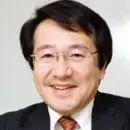
Shigeyuki Yokoyama
Studies on the structural biology of proteins and nucleic acids, with a special emphasis on gene expression (transcription and translation: protein biosynthesis systems) and on proteins participating in cell signaling systems involving extracellular ligands, transmembrane receptors etc., by using X-ray crystallography and NMR spectroscopy. The purpose is to understand the molecular mechanisms underlying the functions of complex cellular machines consisting of many molecules, by analyzing the protein conformations and molecular functions. Among my many favorite targets, I spent much time studying RNA polymerases, tRNAs, and aminoacyl-tRNA synthetases. Illustrated by several examples of the discovery of the structure and function of the modified nucleoside in the first letter in the anticodon of a tRNA; also of the determination of the three-dimensional structures of several complexes between aminoacyl-tRNA synthetases and tRNAs, contributing toward understanding the decoding of genomic DNA. Applied this approach to the tRNA maturation process involving modification enzymes, as well as splicing factor, RNA polymerases, and an RNA helicase, which revealed fundamental molecular mechanisms in genetic systems. One of my recent results covered the structural determinations of multiple transmembrane proteins, such as Adiponectin receptors and Claudin family proteins, and eukaryotic translation initiation factor 2B.
On the basis of my research on genetic systems (particularly the translation system), novel technologies, such as cell-free protein production technologies and innovative genetic code systems utilizing unnatural base pairs and non-natural amino acids, have been developed. The cell-free protein synthesis method produces proteins by the in vitro use of the cellular translation machinery. Dramatically improved the method to enable the production of challenging protein samples, such as huge, unstable complexes and human integral membrane proteins. The method evolved as a prerequisite to reconstitute the natural environmental system in vitro. For the genetic-code systems engineering, developed aminoacyl-tRNA synthetase mutants by molecular engineering on the basis of their crystal structures, and integrated them into Escherichia coli and mammalian cells to incorporate non-natural amino acids site-specifically into proteins. Also developed unnatural base pairs that are functional in replication, transcription, and translation with nonnatural amino acids. These technologies have successfully been used to understand protein functions, including human epidermal growth factor receptor (EGFR) signaling.